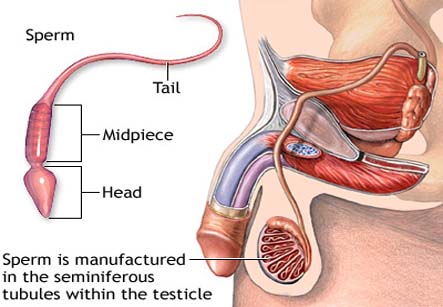Percutaneous Sperm Aspiration PESA
Introduction
Percutaneous Epididymal Sperm Aspiration or PESA involves retrieval of sperms from testis as a part of assisted reproductive techniques and IVF. It was previously thought by many fertility specialists that sperm retrieved from the testis were incapable of fertilization. However, fertilization and successful pregnancies with testicular sperm have been possible by using open or percutaneous methods to retrieve sperm directly from the testis. The clinical evaluation as well as success rate of this method of percutaneous testicular retrieval of sperm is yet to be totally understood due to less experience. Some scientists have reported that fertilization and pregnancy rates with use of sperm retrieved from the testis during IVF/ ICSI cycles are similar to those achieved with sperm retrieved from the epididymis.
The advantages of percutaneous epididymal sperm aspiration:
1. Requirement of less anesthesia
2. No need of performing open scrotal exploration
Iran ranks first in the region in terms of infertility treatment studies

3. Less postoperative discomfort for the patient
4. The procedure is easily repeatable
5. Much less expensive than microsurgical techniques of retrieval
6. The procedure does not require specialty training in microsurgery.
Disadvantages:
1. Low fertilization and pregnancy rates as compared to procedures such as MESA and ICSI combined with IVF.
2. Limited ability to cryopreserve or freeze the sperm for future IVF/ICSI procedures
3. There is potential for damage to adjacent healthy tissue
4. Poor quality and low numbers of sperm retrieved in the aspiration
5. Frequent contamination of sperm with blood cells.
In this procedure, sperms are directly recovered from their storage place called as the epididymis (where sperm are stored after production from each testicle).
The procedure:
PESA is usually carried out under local anesthetic by a specialist in urology. In this procedure, a fine, hollow needle is inserted into the epididymis and sperms are then removed by using gentle suction. Feeling of some discomfort in the groin region for a few days after this procedure is normal, but this can be relieved with regular painkillers.
Suitability
PESA is considered appropriate for men who have absence of sperm in the ejaculate because of congenital absence of vas deferens (the tube which carries sperm), or because the tube is blocked due to some obstruction.
The use of intracytoplasmic sperm injection is done after retrieval of sperms by PESA. This technique has revolutionized the treatment of patients with male factor of infertility. It achieves considerable fertilization and pregnancy rate after collecting spermatozoa directly from the epididymis. The sperms thus obtained are injected directly into the matured female egg in the fertility lab. It requires just a one sperm. This can also be done after retrieval by microsurgical aspiration of spermatozoa from the epididymis (also known as MESA). Both the techniques are compared with respect to their efficiency, convenience of execution, patient recovery, possibility of repetition and pregnancy rates.
Rates of fertilization and pregnancy were low when the spermatozoa obtained from the epididymis were used in in-vitro fertilization directly. But with advent of ICSI, the results obtained became better. This shows that the 2 techniques (PESA and ICSI), when combined, are very efficient methods of assisted reproductive techniques.
According to research, PESA is a less invasive technique for spermatozoa retrieval and it can be done as an outpatient procedure under the influence of local anesthesia.
Some other advantages of PESA in relation to MESA are:
1. Minimal or no discomfort for the patient
2. Lesser complication rates as compared to open surgery
3. PESA does not need microsurgical instruments, like microscope or minute devices of retrieval
4. Very simple and convenient technique
5. Cost effectiveness of PESA is well known.
After completion of ICSI cycle which requires the use of very few spermatozoa, the cryopreservation or freezing of remaining material containing sperms can be done to preserve them. These sperm can be used during future IVF cycles after thawing. This also avoids the necessity of future spermatozoa retrieval and resulting physical and economic burden on the patient. The material remaining after PESA can also be frozen and utilized in the same manner for IVF.